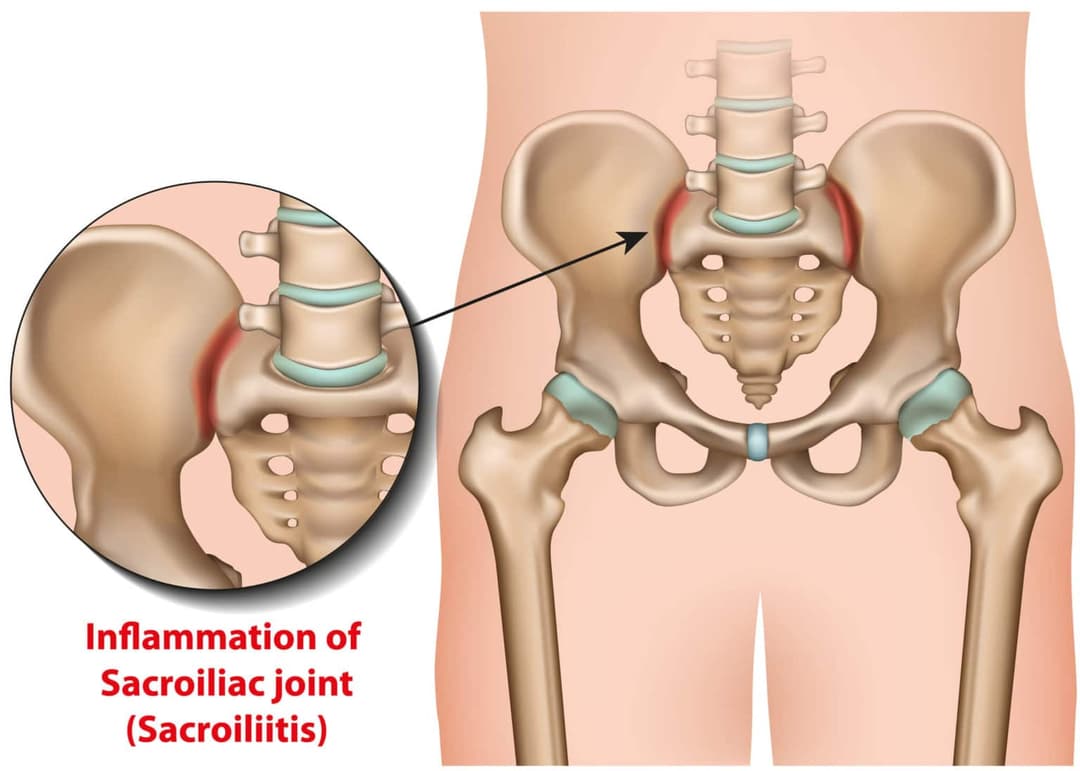Sacroiliac (SI) joint pain is discomfort or inflammation that occurs in one or both of the sacroiliac joints. These joints are located on either side of the spine where the sacrum (pelvic portion of the spine) attaches to the ilium (winged bones of the pelvis).

Sacroiliac Joint Pain
Overview
Causes
Most commonly, the SI joint can become painful from excessive inflammation. This disorder occurs with spondyloarthritides like ankylosing spondylitis, and typically resolves with time. Rarely, hypermobility (too much movement) can lead to pain. This can cause the pelvis to feel unstable and painful. It can be a result of pregnancy, trauma, prior spine fusions, or other unidentifiable causes.
Symptoms
The most common symptom is a dull ache in the lower back and buttocks, but the pain can also be sharp and stabbing. The pain can make it difficult to sit or stand for prolonged periods. Pain can particularly worsen with 1-legged stances which increases the stresses across the SI joint.
Non-Surgical Treatments
- Physical Therapy: Exercises to strengthen supportive muscles and improve flexibility.
- Medications: Over-the-counter anti-inflammatory drugs (e.g., ibuprofen) to manage pain and inflammation. For spondyloarthritides, immune-modulating medications may be used.
- Injections: Steroid injections directly into the SI joint can provide significant, though temporary, relief by reducing inflammation.
Surgical Treatment
Surgery is considered a last resort when non-surgical treatments have failed. It typically involves surgical fusion to permanently stabilize the joint.